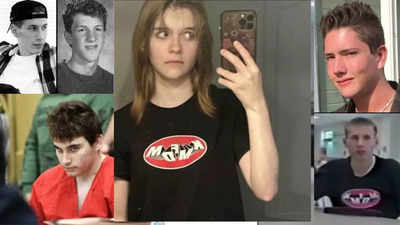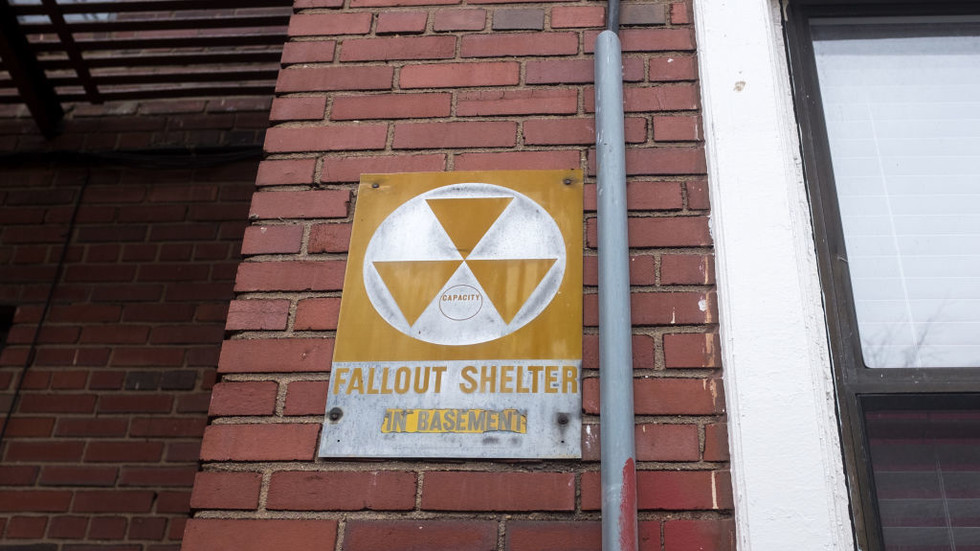
The tragic
school shooting
at Abundant Life Christian School in
Madison
, Wisconsin, has unearthed chilling parallels between the 15-year-old perpetrator Natalie "Samantha" Rupnow and her apparent idols, a disturbing roster of notorious figures who committed some of the deadliest school shootings in modern history. Her manifesto, social media activity, and online presence offer a dark glimpse into the mind of a troubled teen who saw violence as both vengeance and validation.
A Cult of Violence: The Shooters Who Inspired Her
1) Eric Harris and Dylan Klebold

Who Were They?
Eric Harris and Dylan Klebold were the perpetrators of the Columbine High School massacre on April 20, 1999, in Littleton, Colorado. They killed 13 people and injured 24 others before taking their own lives. Harris was known for his methodical, calculated personality, and his writings often depicted a deep disdain for society and humanity, referring to people as a "disease." Klebold, by contrast, was described as more introverted, harboring deep feelings of depression and self-loathing. Together, they meticulously planned the attack, which they saw as both revenge and a way to achieve infamy.
Connection to Rupnow
Rupnow’s fascination with Harris was apparent in her social media posts, which mirrored his misanthropy and obsession with retribution. She often echoed Harris’s sentiment of viewing society as corrupt and hypocritical. Like Harris, Rupnow wrote extensively about her feelings of alienation and a desire to punish the world for its perceived wrongs.
Imitation
Harris and Klebold’s desire to be remembered—regardless of the cost—clearly influenced Rupnow’s own manifesto and actions. Her writings, like Harris’s, framed her attack as a statement meant to etch her name into history. Her choice to wear a KMFDM T-shirt, a band Harris admired, underscores the extent of her identification with him.

Natalie Rupnow
2) Nikolas Cruz (Parkland Shooter)
Who Was He?
Nikolas Cruz was responsible for the mass shooting at Marjory Stoneman Douglas High School in Parkland, Florida, on February 14, 2018. The attack left 17 dead and 17 injured, making it one of the deadliest school shootings in US history. Cruz had a history of behavioral issues, social alienation, and mental health struggles. His online activity revealed a fascination with violence and weapons, as well as frequent expressions of anger and frustration at being ostracized by peers.
Influence on Rupnow
Rupnow’s social media reportedly featured images of Cruz, suggesting she identified with his trajectory from isolation to violence. Cruz’s inability to connect with peers and his perception of being mocked or dismissed by those around him paralleled Rupnow’s own feelings of rejection and invisibility.
Parallels
Cruz’s writings and videos often described his rage toward society and his longing to make others feel the pain he endured. Similarly, Rupnow’s manifesto contained repeated references to making the world “see” her by inflicting suffering, drawing a direct parallel to Cruz’s motivations.
3) International Influences
Trollhättan, Sweden (2015 School Stabbing)
Who Was the Perpetrator?
Anton Lundin Pettersson
, a 21-year-old with far-right, anti-immigration beliefs, carried out a racially motivated attack at a school in Trollhättan, Sweden, on October 22, 2015. Pettersson, dressed in a Darth Vader-style helmet, killed three people and injured another before being fatally shot by police. His attack was premeditated and targeted individuals of immigrant backgrounds, driven by his ideology of racial hatred and isolation.
Connection to Rupnow
Rupnow reportedly shared footage from this attack, suggesting she drew inspiration from the spectacle of violence itself rather than its specific motives. The racial element may not have resonated with Rupnow’s worldview, but the sense of premeditated isolation and anger at societal constructs aligned with her narrative.
Jokela, Finland (2007 School Shooting)
Who Was the Perpetrator?

Pekka-Eric Auvinen, an 18-year-old high school student, killed eight people and then himself in a shooting at Jokela High School in Finland on November 7, 2007. Auvinen was heavily influenced by nihilistic philosophy and harbored a deep hatred for humanity, referring to himself as a “natural selector” and justifying his actions as a form of Darwinian retribution.
Connection to Rupnow
Auvinen’s writings and videos, which decried societal norms and celebrated destruction as a form of liberation, closely align with the themes of Rupnow’s manifesto. She shared references to this incident on social media, highlighting her identification with Auvinen’s ideology of humanity as inherently flawed and deserving of punishment.
The Manifesto: War Against Humanity

Supporters hold candles during a candlelight vigil Tuesday, Dec. 17, 2024, outside the Wisconsin Capitol in Madison, Wis., following a shooting at the Abundant Life Christian School on Monday, Dec. 16. (AP Photo/Morry Gash)
Rupnow’s alleged manifesto, War Against Humanity, serves as a chilling blueprint of her motivations and ideology. It reflects themes drawn from these shooters while also providing a deeply personal insight into her psyche.
Hatred for Society
Rupnow’s manifesto described humanity as a “plague” responsible for cruelty, hypocrisy, and exploitation. She criticized societal norms, calling them “false morality” that perpetuated inequality and suffering. These themes echo the rhetoric of Harris, Klebold, and Auvinen, all of whom viewed their actions as a form of retribution against an indifferent world.
Desire for Power and Recognition
Like Harris and Cruz, Rupnow sought to assert control in a life she perceived as powerless. Her writings repeatedly emphasized the need to be remembered: “If the world doesn’t care that I exist, it will care when I don’t.” This need for recognition mirrors the motivations of many mass shooters who see violence as their only path to significance.
Alienation and Revenge
Rupnow’s manifesto detailed feelings of rejection from her family and peers, painting herself as an outcast forced into isolation. She blamed others for her pain, describing them as “part of the disease called humanity.” This framing of her actions as justifiable revenge mirrors the writings of both Harris and Auvinen.
Nihilistic Despair
Rupnow’s writings also revealed an existential hopelessness, viewing her actions as both a protest against existence and a personal liberation: “A life wasted in silence is a death that changes nothing.” This nihilism, central to her ideology, aligns closely with Auvinen’s philosophical justifications for his own attack.

 3 hours ago
3
3 hours ago
3









